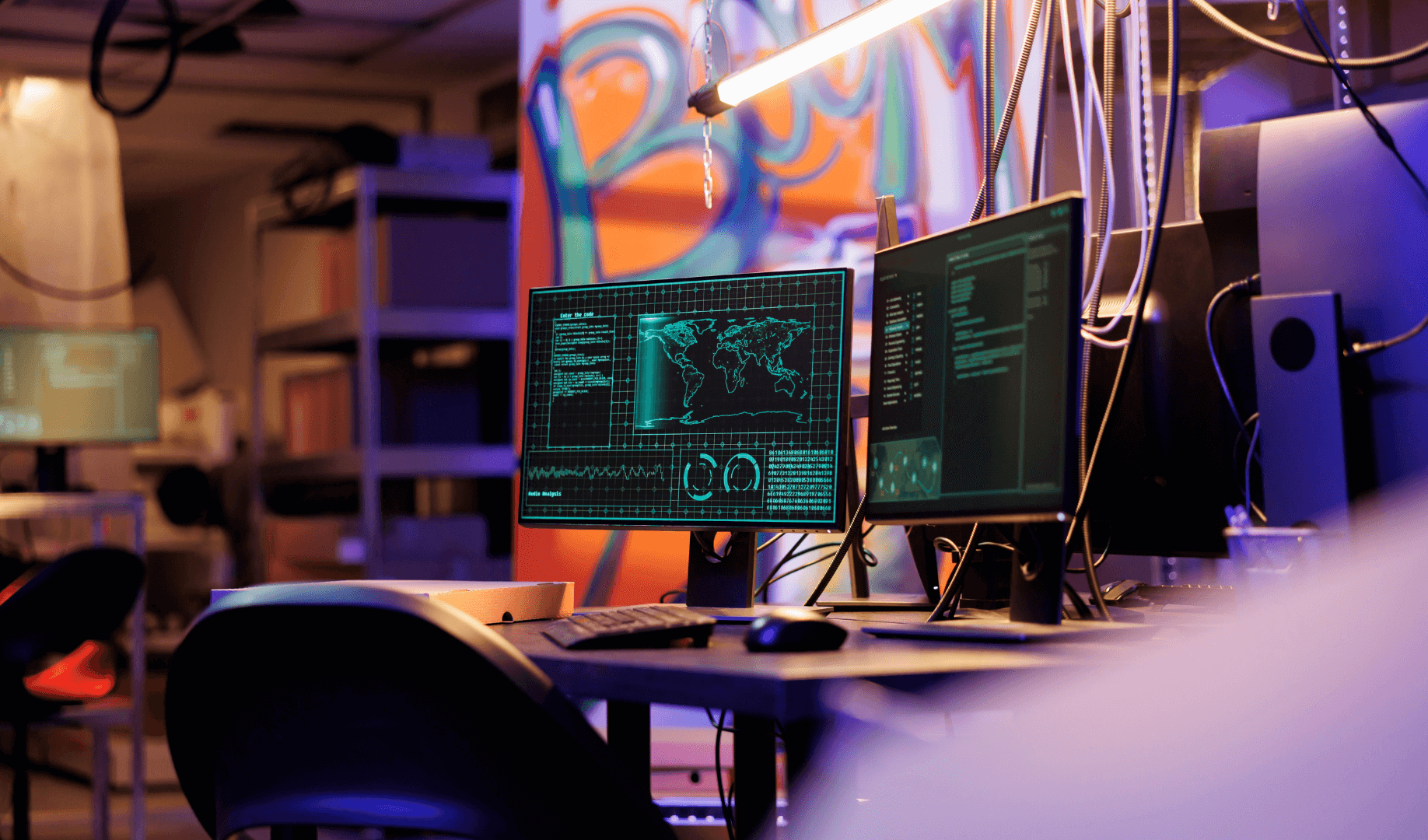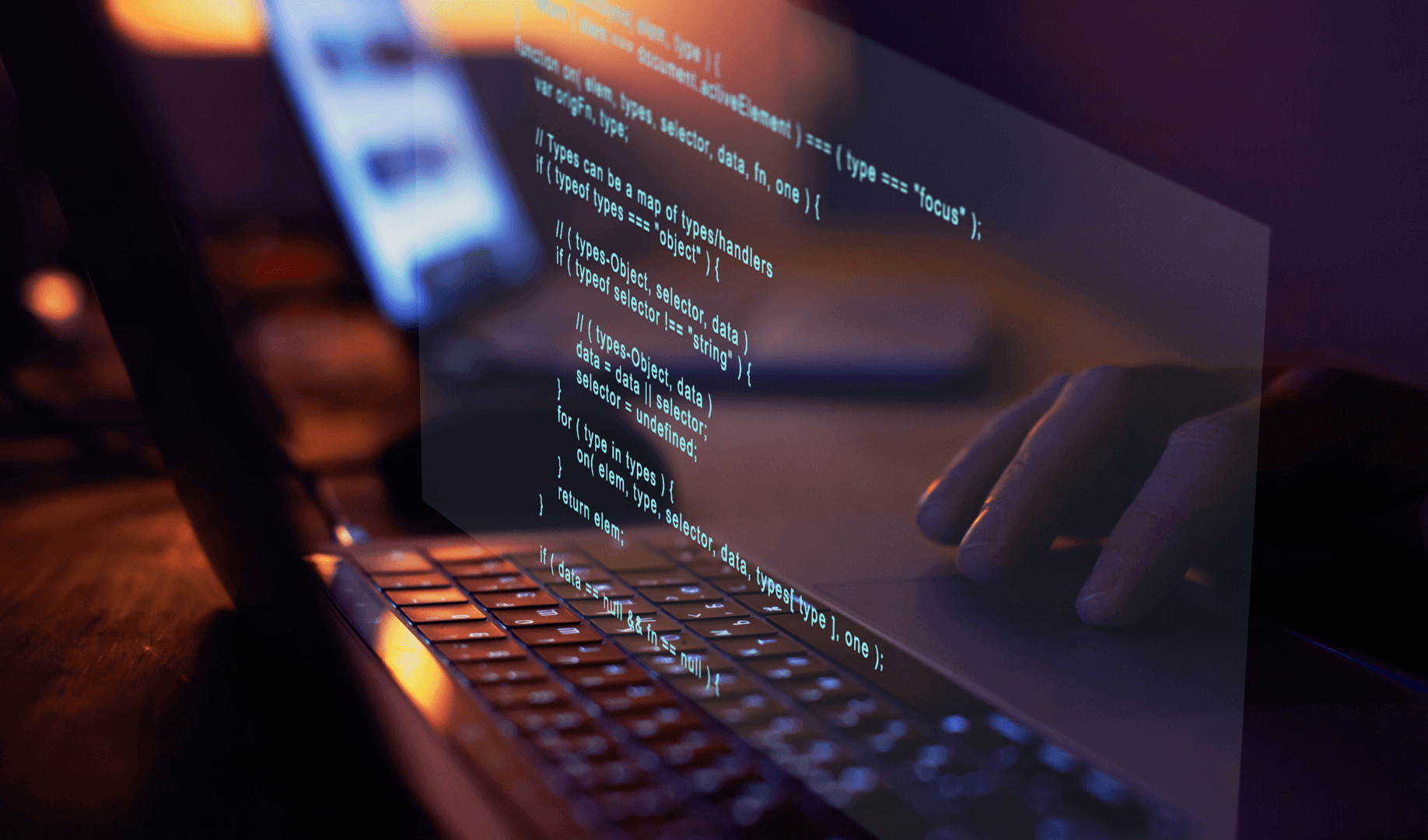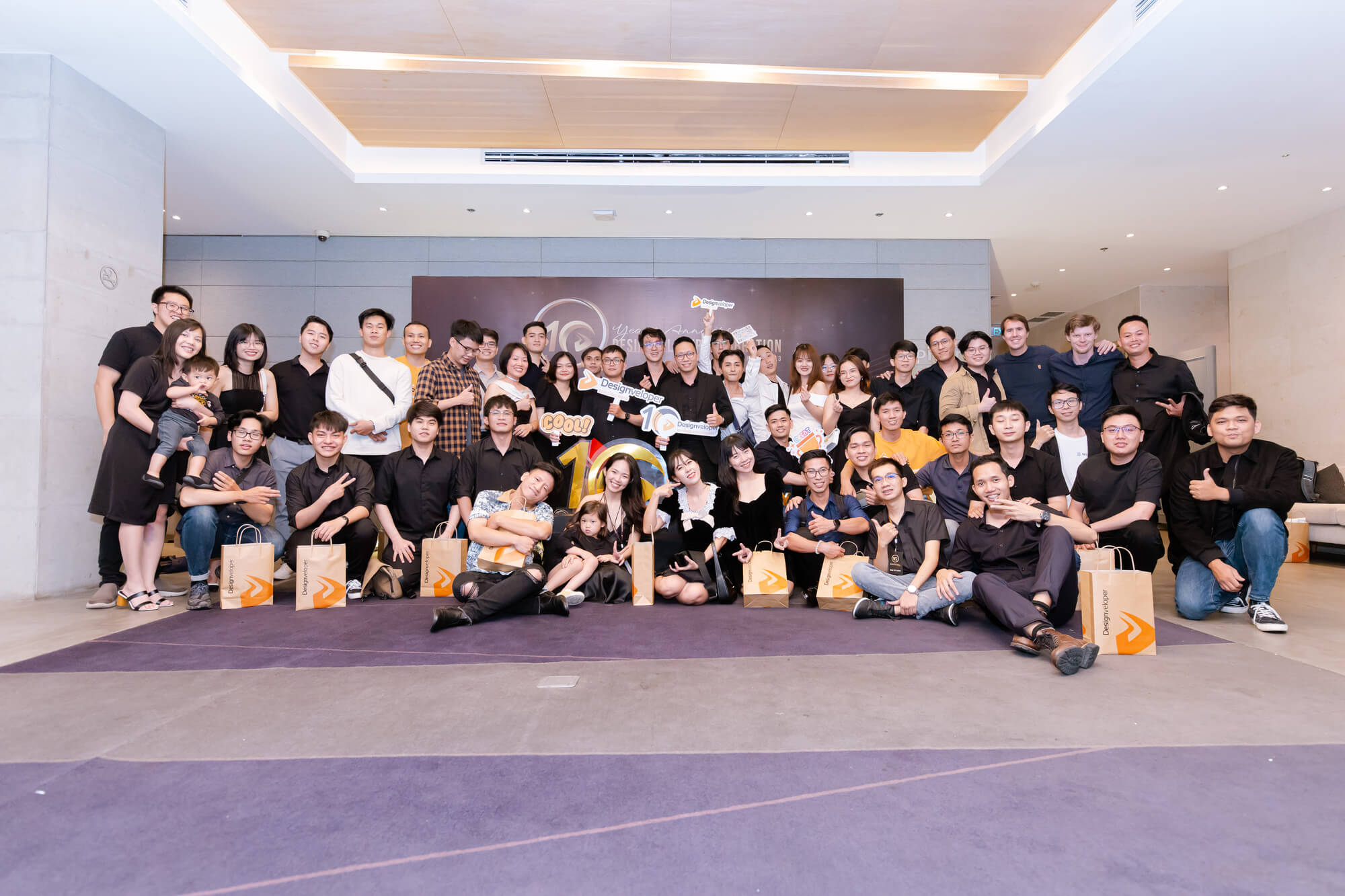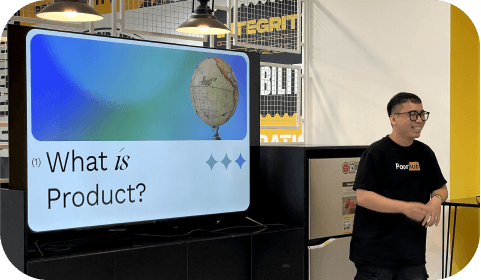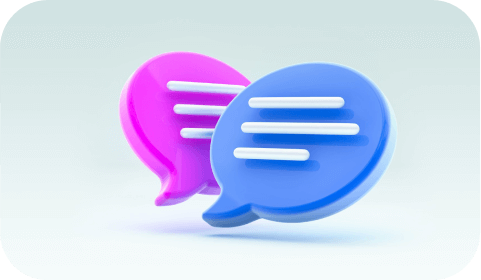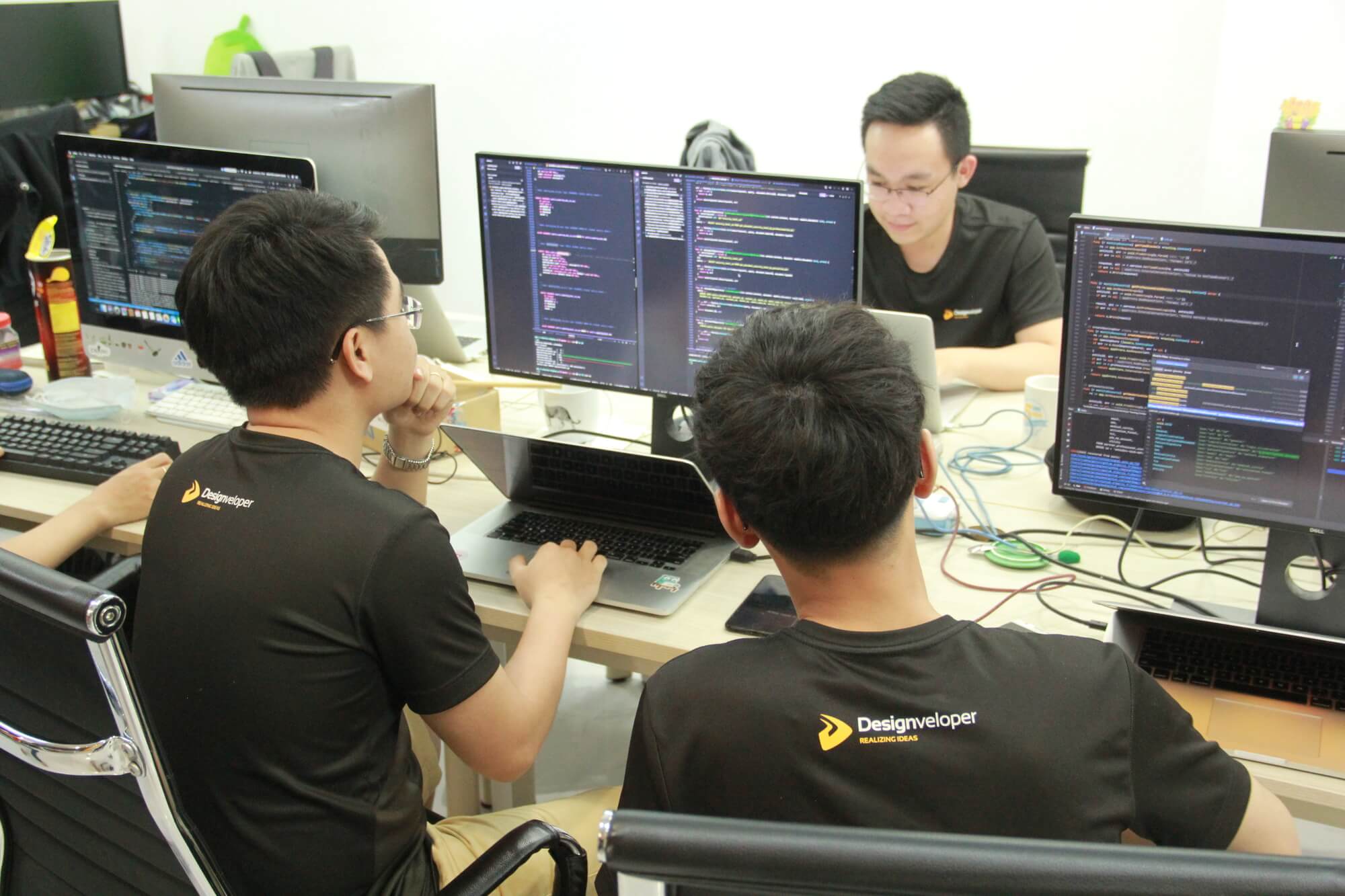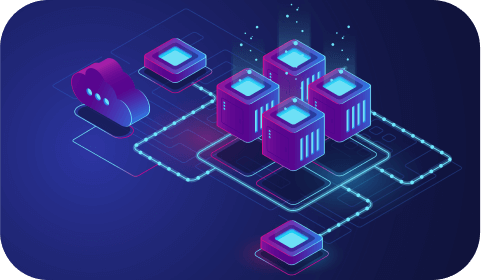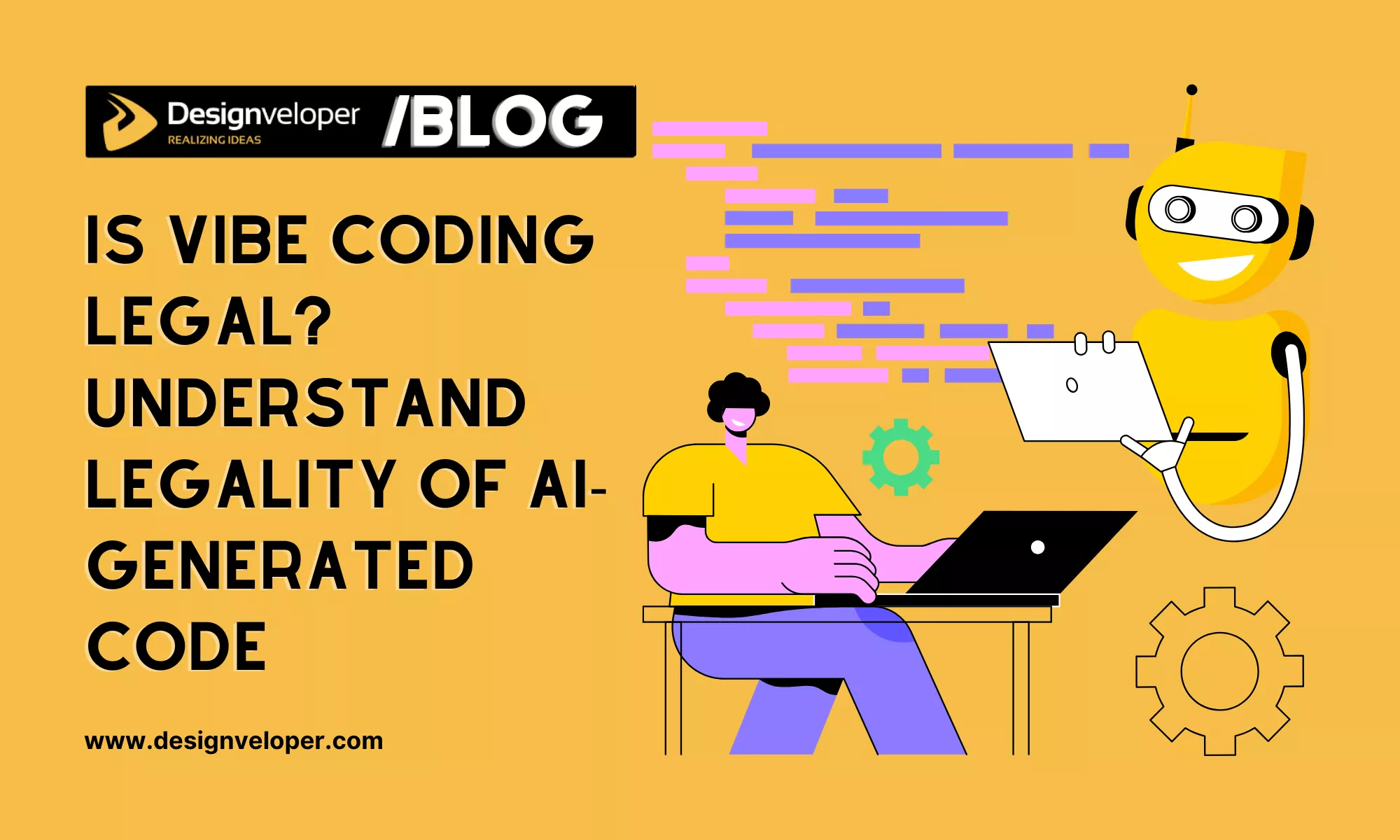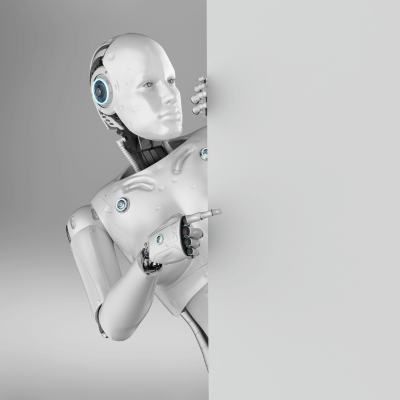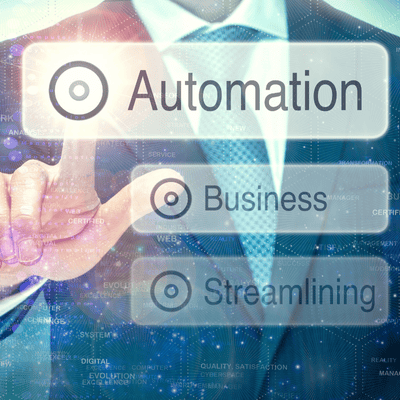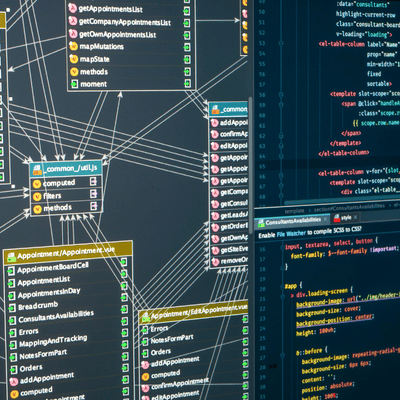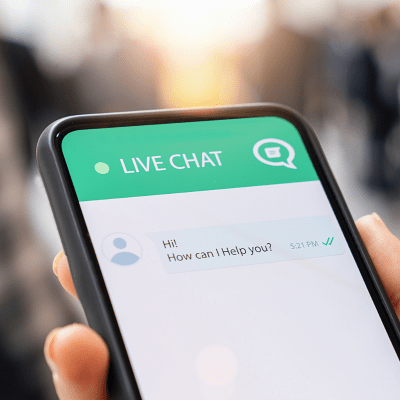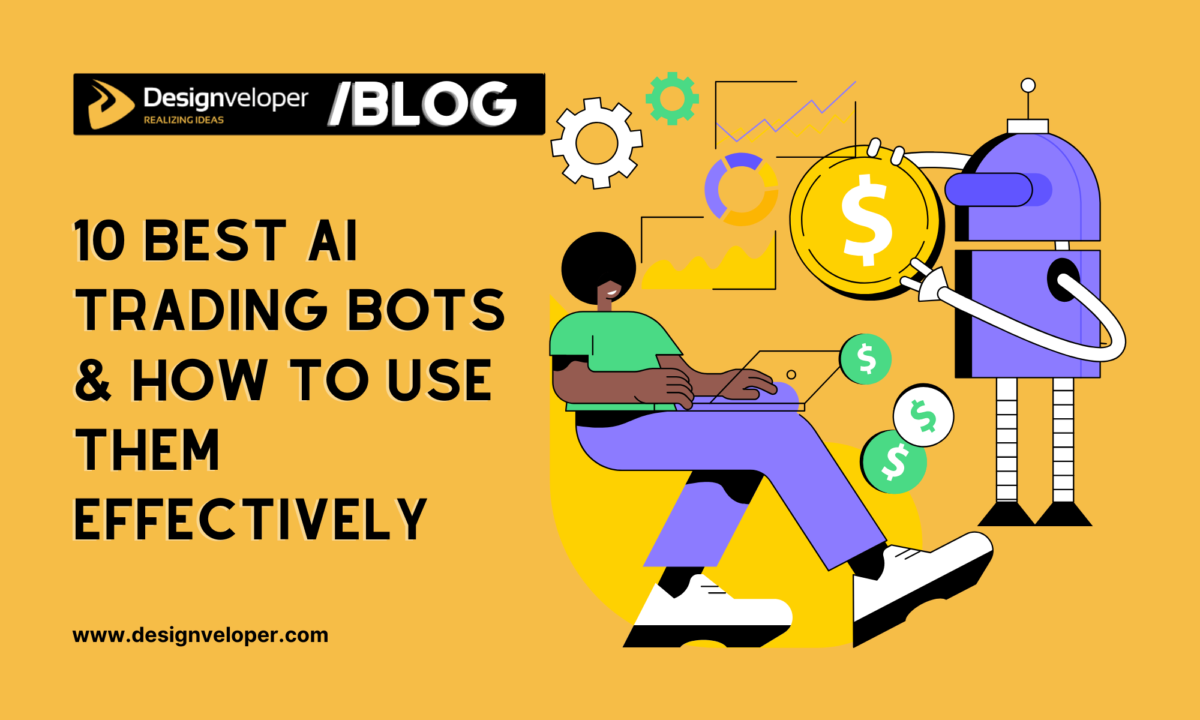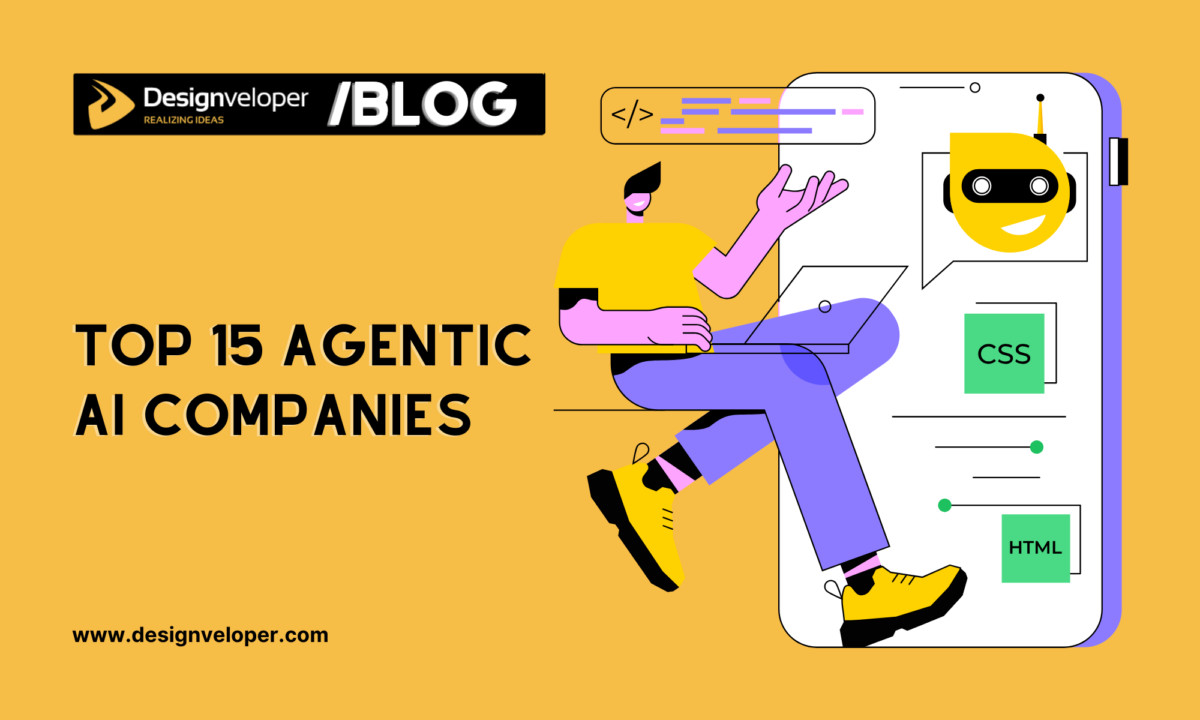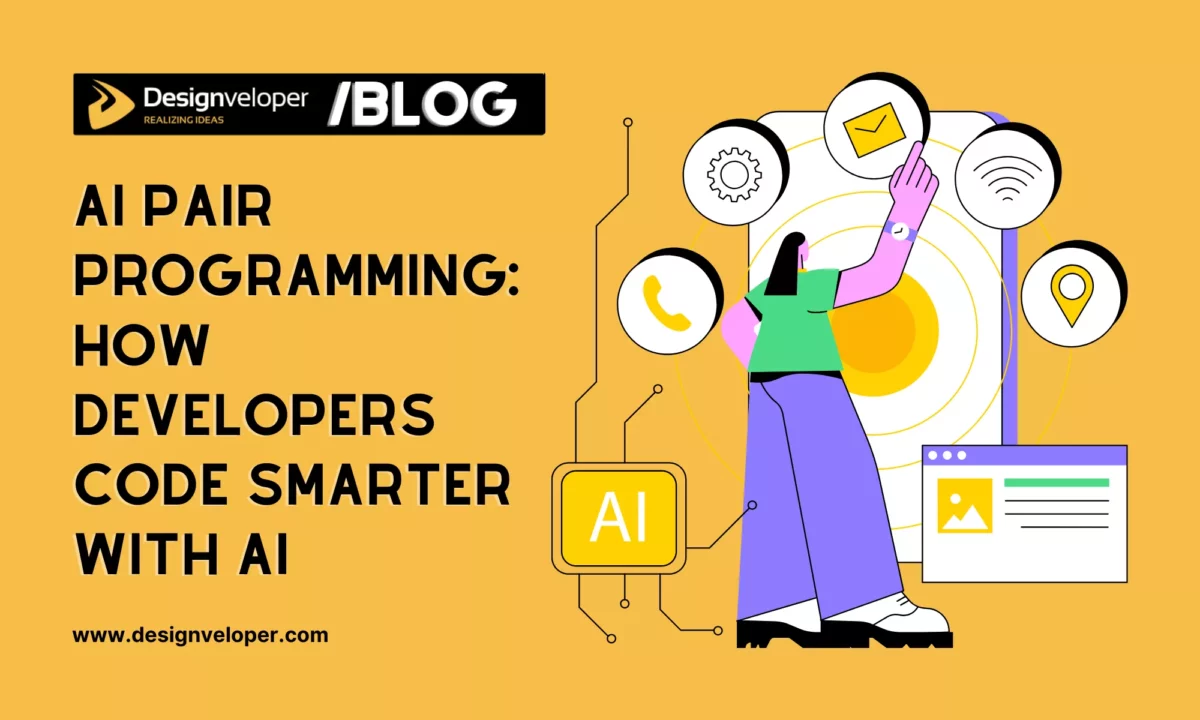
The advancements of AI have benefited developers in various ways, from explaining tricky concepts to generating boilerplate code. It also opens new doors for even non-coders to enter the world of software development with less hassle. This, accordingly, introduces a new concept: vibe coding. But is vibe coding legal?
There’s a myth that developers don’t need to worry about legal risks associated with AI-generated code, as they do not directly write it out. However, reality tells a different truth. You still have to take responsibility for the code in your commercial app or software, no matter how it was generated.
In this blog post, we’ll help you better understand the legality of AI-generated code. Further, we’ll walk you through how to vibe code properly to avoid unexpected legal penalties.
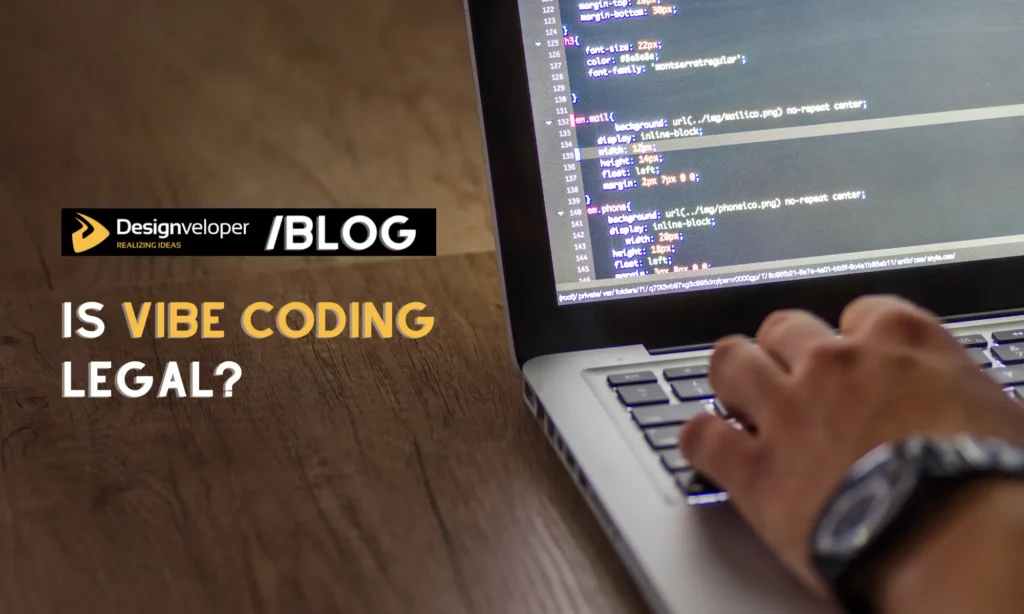
Why Developers Are Asking if Vibe Coding Is Legal
AI tools are becoming a crucial part of software development. They’re used to not only answer coding questions but also generate, document, and debug code.
It’s fine if developers and business owners use AI-generated code for hobbyist or personal projects.
But when AI tools, like GitHub Copilot or OpenAI’s Codex, become increasingly intelligent and useful, they’re more adapted as powerful assistants in commercial and professional projects. And unfortunately, this practice leads to legal concerns among developers.
When being asked about AI-generated code, many developers show their worry about ownership. AI creates code, so who owns it? Is that the AI itself, the company training the model, or the developer using the tool?
Many AI tools clarify that the complete ownership belongs to the developer, while others claim partial ownership or don’t make this clear. This makes developers unsure whether they can freely use or sell the generated code.
Further, developers care about the legality of vibe coding because of potential copyright infringement from training data.
We all know that large language models (LLMs) are trained on public code repositories like GitHub. This data can be open-source or third-party. If AI unintentionally creates copyrighted code, developers may confront lawsuits.
But even when code is reproduced from open-source training data, it still can lead to legal penalties. Take the case of GitHub Copilot as an example. Open-source programmers sued Microsoft and OpenAI, as the collaborative product, GitHub Copilot, generated monetized code based on their open-source work.
Another concern is about licensing. Developers must ensure their apps don’t violate the license before publishing. However, if their apps contain licensed code from the original training data, legal complications can happen.
Explaining the Legal Status of Vibe Coding
If you ask whether vibe coding is legal, we would say yes, but only under specific conditions. Further, each region enacts different laws to clarify the legality of vibe coding and AI outputs.
Naturally, using AI tools to generate code isn’t illegal by itself. Developers can freely use AI-assisted coding tools, like OpenAI’s Codex or GitHub Copilot, to write code for different purposes, from learning and experimentation to commercial projects.
However, the legal issues only arise around how the AI was trained and how developers use its output. Particularly, if AI generates code from licensed or copyrighted training data without permission, its output is considered to violate copyright. Meanwhile, if developers use AI-generated code in a way that infringes software licenses, they can face lawsuits.
Various laws were enacted long ago to handle and mitigate AI-related risks. They don’t ban AI-generated code, but they force digital products, including software, to follow strict standards or requirements related to authorship, accountability, and security.
Although laws vary by region, the regulations about AI outputs and vibe coding haven’t been clarified. Besides, regardless of how your software was developed, you’re still directly liable for the code, data handling, and the app’s performance. This means that you may face legal issues if your app violates data protection or AI laws.
Now, let’s see which legal mechanisms different countries apply to handle vibe coding outputs:
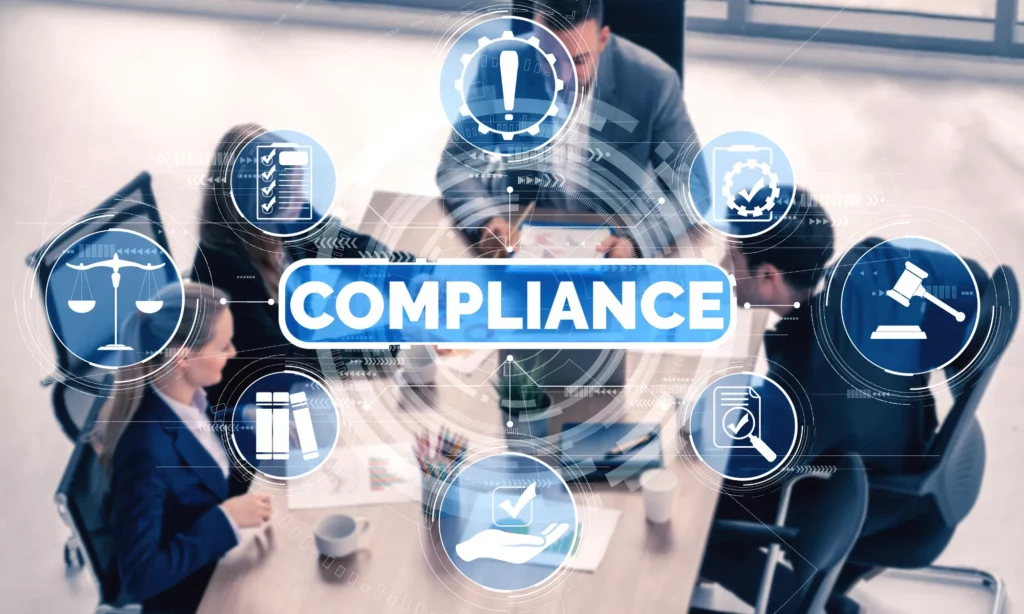
How the US regulates the legality of AI & vibe coding
In the United States, Congress claimed that whether using copyrighted materials to train AI systems violates copyright laws depends on four different factors set out in the U.S. Copyright Act:
- Purpose and character of the use: Is the training data used for commercial or nonprofit? How does the data use change the original work into something different?
- Nature of the copyrighted work: Is the copyrighted work factual or creative? If the AI uses creative materials for commercial purposes, the risk of violating copyright laws is much higher. A typical example is the lawsuits brought by Bartz against Anthropic and Kadrey against Meta, as these AI companies trained their tools using books from pirated libraries.
- Amount and substantially used: How much of the original work is used?
- Effect on the market: Does the new use significantly impact the market or value of the original work? The Supreme Court considers this factor as the most important one to evaluate fair use.
Even when AI training is seen as fair, AI-generated code itself can still violate copyrights. Copyright owners may file lawsuits if they prove the AI actually copied their original work and generated substantially similar outputs.
The U.S. law also stipulates that if AI outputs infringe copyrights, both the user prompting the AI and the AI company may be liable, even if they are unaware that the work was copyrighted.
How the EU regulates the legality of AI & vibe coding
The European Union introduced the AI Act, the world’s first comprehensive AI law. The Act clarifies transparency and accountability requirements for general-purpose AI (GPAI).
It also comes with two provisions (Article 53(1)(c) and (d)) about how GPAI companies should handle copyrighted materials.
- First provision: AI developers must comply with copyright law, including the Text and Data Mining (TDM) exception in the EU Copyright Directive. This exception enables developers to train their AI using copyrighted materials as long as the right owners permit them to do so.
- Second provision: GPAI developers must publish adequately detailed summaries to clarify the content in AI training.
On July 10, 2025, the European Commission also released the GPAI Code of Practice, voluntarily contributed by independent experts. This code provides AI companies practical solutions to comply with requirements related to transparency, security, and copyright.
Beyond copyright issues, vibe-coded products are also exposed to legal risks due to their hidden security flaws. As manually reviewing AI-generated code breaks the convenience of vibe coding, many developers blindly accept the code that may come with malware, inefficiencies, or insecure coding practices.
The EU released the Cyber Resilience Act (CRA) to strictly control the cybersecurity standards of all commercial software in the EU. Under the Act, AI-assisted coding is still allowed, but developers or business owners must be liable for their software’s cybersecurity. If defective vibe-coded software causes harm to users, the EU will use the new EU Product Liability Directive to punish its developers.
Until now, the EU laws we mentioned are only preventive regulations. They haven’t fully solved the issue of using copyrighted materials for AI training or protecting end-users from defective vibe coding.
How the UK regulates the legality of AI & vibe coding
The United Kingdom is still actively reviewing how copyright laws apply to AI outputs.
The government hasn’t enacted a single, specific AI Act to regulate the legality of AI-generated content. Instead, they only adopt a flexible, principle-based framework that covers core requirements about security, transparency, and accountability for AI systems.
Under the current UK law, if you gave prompts for AI to generate content, like code, you are often considered the legal author of the work, although AI did most of the creative work.
However, this protection is unclear and hasn’t been really tested in court. Therefore, we don’t know how far this protection goes.
So, in short, using AI tools to write code isn’t totally legal or illegal. The legality of vibe coding depends on various factors, from whether it uses copyrighted materials to how secure its generated code is.
Unfortunately, current laws haven’t clarified in which cases vibe-coded products are legal or not. This practice might be left to resolve in the future.
Who Owns AI-Generated Code?
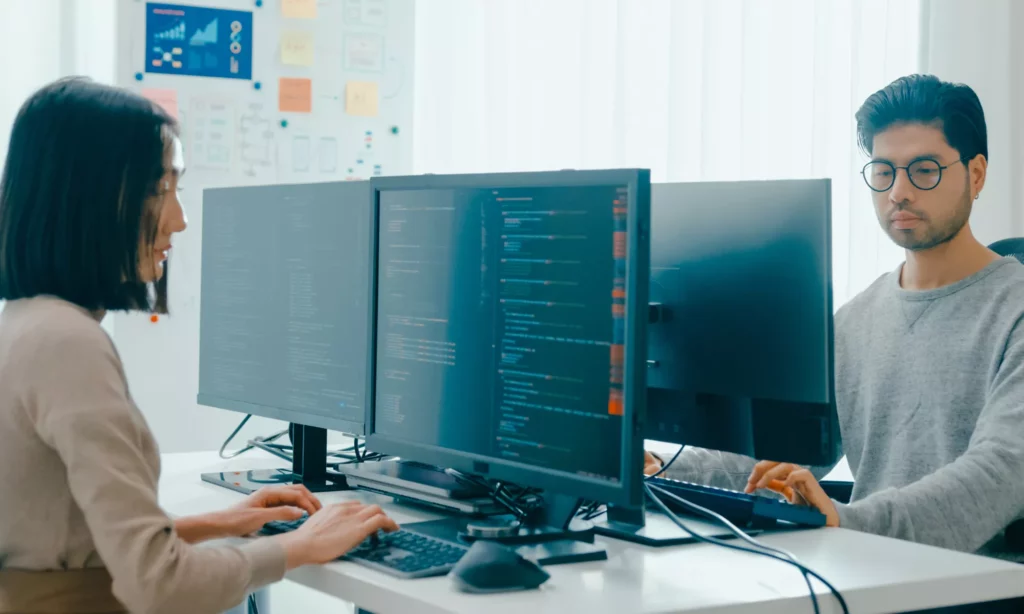
The question of who owns AI-generated code is unanswered due to its related legal issues.
AI itself cannot hold copyright for certain because copyright laws now only protect works created by human authors.
This means that if you prove that the code was created by your creative input (like giving specific prompts or reviewing and refining outputs), you’re considered the legal owner of the code. In other words, the more humans get involved in coding, the stronger the claim of ownership.
However, when AI-generated code contains some parts of copyrighted or licensed code, this practice can infringe intellectual property rights. Even when you don’t intentionally use the code, you still have to face legal issues.
Additionally, if you leverage fully AI-generated code, it might not be legally recognized as “original”.
In other words, if you only send a general prompt and don’t audit the code (this practice means “no meaningful human involvement”), the code is non-copyrightable. Accordingly, anyone can reuse it without fear of violating copyright laws, as no one legally owns it.
Various regions, including the US, UK, and EU, claimed the authorship of AI outputs in their copyright laws, as we discussed above. They emphasize that only AI-generated work reflecting the developer’s creative input meets originality standards and is protected accordingly.
Tips: If you want to claim the ownership of AI-generated code, you should always review, audit, and add creative input when using AI tools for vibe coding. Meaningful human involvement ensures originality and fosters the legal authorship over the final code.
Copyright and Intellectual Property Concerns
One of the biggest legal concerns in vibe coding is about copyright and intellectual property (IP).
AI-assisted coding tools use vast datasets of open-source code from platforms like GitHub or GitLab to generate code. This learning approach helps the tools understand and use various programming languages skillfully, but also leads to copyright and IP issues.
How? The training data may be under open-source licenses, which often come in two types: permissive and copyleft.
Permissive licenses, like Apache, MIT, or BSD, allow you to use, edit, and distribute the code (even in commercial software) if you give credit to the original author or attach the same open-source license text somewhere in your project.
Meanwhile, copyleft licenses, like AGPL or GPL, require any software using their code to be open-source. For example, if your app contains a small piece of GPL-licensed code, you have to share the entire source code of your software publicly.
When AI accidentally produces code under these licenses, your commercial application integrating this code can face the risk of license violation. Besides, you can confront copyright infringement if the AI assistant generates code based on copyrighted materials for commercial software.
The lawsuit against GitHub Copilot we discussed in the first section is a typical example.
There are no clear regulations yet to resolve copyright and IP issues. However, developers should take precautionary action when using AI tools to write code.
Tips: To avoid these issues, one practical tip is to use AI for logic generation, like brainstorming algorithms, automating routine tasks, or testing structures. Then, human developers will manually review license compliance and audit the code before deployment. This may ruin the nature of vibe coding, but keep your software safe from legal risks.
Terms and Conditions of AI Coding Tools
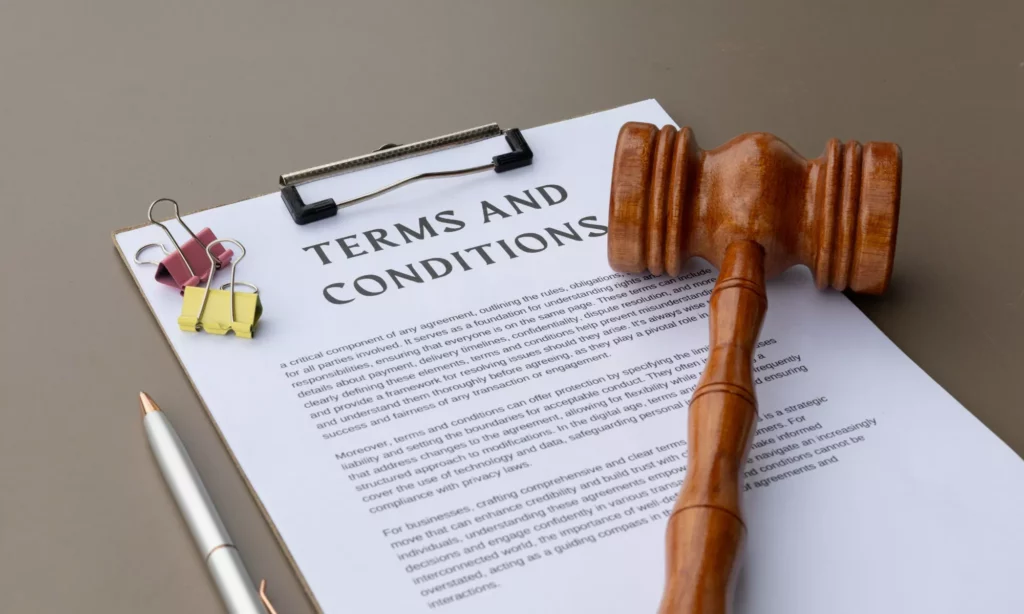
To avoid unexpected legal risks when using AI for vibe coding, you should understand its corresponding terms of service (TOS). These terms clarify what you can or cannot do with AI-generated code, helping you decide whether to use the code in open-source or commercial projects.
GitHub Copilot
The documentation of GitHub Copilot indicates that users are responsible for validating the legal compliance of any code suggestions, because the generated code can resemble open-source repos.
To help you mitigate legal risks, GitHub Copilot offers a configurable filter. This feature checks suggestions against the public code and lets you block suggested code that matches public code.
Besides, GitHub Copilot has a new code referencing feature that still shows suggestions in the chat, along with the matching public code’s source files, repos, and licenses. This functionality allows you to decide whether to use, adjust, re-license, or replace the suggested code.
When it comes to ownership, GitHub Copilot emphasizes users as the legal author of the content (including input prompts and code outputs). However, as the Copilot’s work may contain errors and legal implications, you should:
- Evaluate the Copilot’s work carefully in terms of functionality, security, readability, and maintainability. You can use automated tests and tooling (e.g., linting or code scanning) to check the generated code’s accuracy and accuracy more efficiently.
- Ensure compliance with third-party licenses.
OpenAI (ChatGPT)
The TOS documentation of ChatGPT claims that users have full rights to own both input prompts and generated outputs, as long as local laws recognize this ownership. As you own the generated code, you can freely use, modify, or sell it.
However, your use shouldn’t infringe any third-party licenses or rights. Therefore, you have to sustain full responsibility for verifying the output’s legal compliance before using it for commercial projects.
Cursor/Replit
Cursor and Replit give you authorship of AI-generated code but warn you against violating third-party licenses and copyrights. These tools do not generate code themselves, but rely on various large language models (LLMs) for operations.
When you prompt Cursor to suggest code, the actual generation comes from these integrated models instead of Cursor’s own algorithm. Therefore, to check the legality of generated code or intellectual property (IP) rights, you need to access the TOS documentation of the model suggesting the code.
These models can be trained on both permissive and non-permissive licensed code, but they create new code patterns instead of copying code exactly. So, the legal risk of matching suggestions is quite low but not zero. You should review the code for legal compliance carefully, keep documenting your development process to prove originality, and seek legal consultancy, especially for commercial projects.
How to Use Vibe Coding Safely and Legally
Vibe coding eases and accelerates your development process, but it should come with legal responsibilities. If you leverage vibe-coded outputs for commercial projects, below are several tips to use AI ethically to avoid legal risks:
1. Always use reputable tools (Cursor, ChatGPT, Copilot)
Leverage reliable AI coding tools, like GitHub Copilot, OpenAI’s ChatGPT, or Cursor. They have clear terms of service, transparent documentation on licensing, and well-defined data processing practices. Don’t choose unverified coding assistants that don’t clarify their training methods or data sources.
2. Review AI output for licensing or plagiarism
Even when the best AI models generate code by predicting patterns instead of copying exact code, the legal concerns of matching suggestions are not zero.
Therefore, you should always review the code for licensing or plagiarism issues before using the code for your commercial software. Whether you use manual reviews or automated tools, thorough checks help verify the created content to avoid redistributing it illegally.
3. Store commit history to prove human involvement
Store detailed records of your development process in Git or similar version control systems to prove meaningful human involvement. This is necessary if you want to demonstrate originality and authorship if legally questioned later.
4. Add license files and documentation clearly stating authorship
Add LICENSE and README files that clarify who owns the project and which licenses are adopted. This practice explicitly states which pieces of code were AI-generated or human-written, hence protecting you and future collaborators.
5. Consult legal or compliance teams before commercial release if working for enterprises
You should have your legal or compliance teams review the final code if you plan to develop software for commercial use or for a company. These teams help check third-party license obligations, compliance with regional laws, and potential IP issues.
How Designveloper Helps Develop Software Legally and Safely
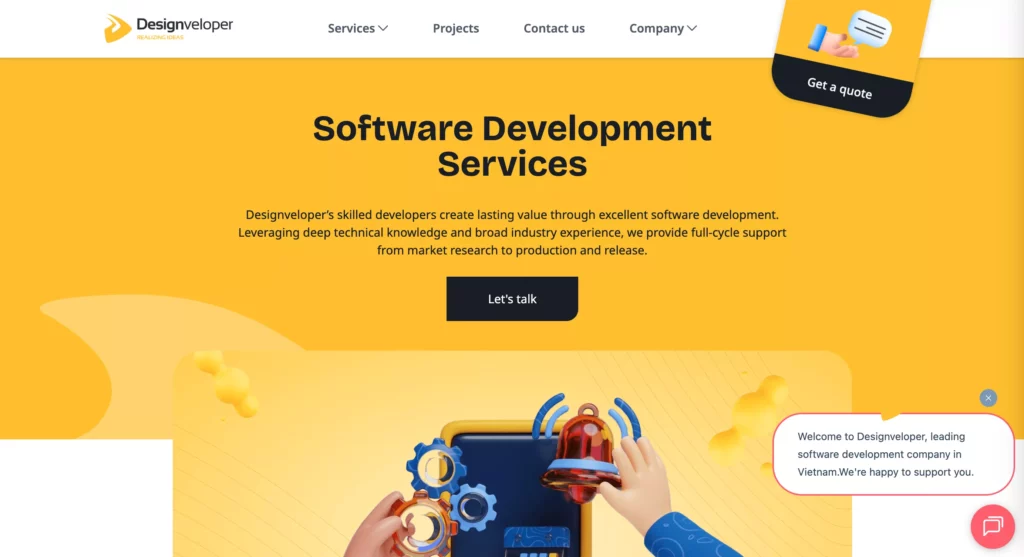
Designveloper is the leading software development and IT consultancy company in Vietnam. At Designveloper, we believe innovation should go in parallel with quality, security, and compliance.
Therefore, we integrate AI responsibly and legally into the software development process. Accordingly, we focus on using verified tools, complying with open-source licensing standards, following industry regulations (e.g., GDPR or CCPA), and conducting transparent development practices.
Our team of 100+ skilled developers, designers, and other specialists blends deep technical expertise with strong legal awareness. We ensure that our projects are built with clean, traceable, and compliant code.
From early prototyping to deployment, we follow strict quality assurance and documentation processes to meet global regulations and protect the intellectual property and sensitive data of our clients. Our notable projects, like LuminPDF, ODC, or Walrus Education, have received positive feedback for their technical details, good user experiences, and smooth scalability.
With our proven track record and flexible Agile frameworks, we are confident to deliver fast, smart, and legally sound software innovation to your business. Contact us now and bring your software idea to life!






Read more topics
You may also like















